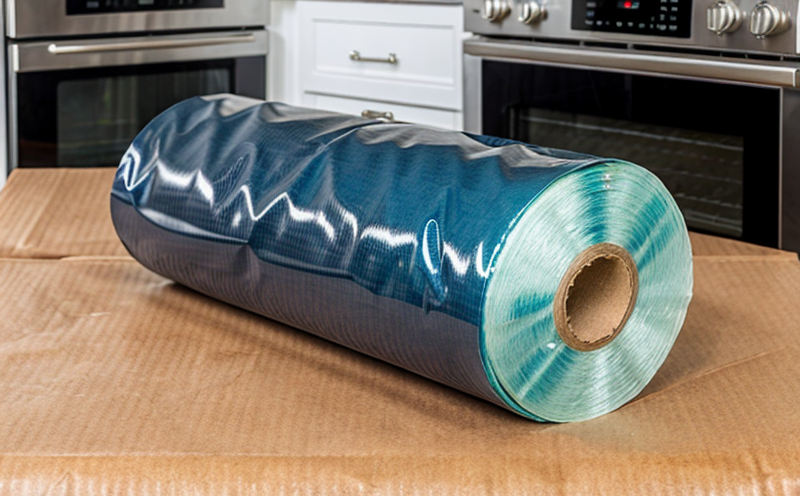ASTM D543 Resistance to Detergents Testing of Household Plastic Wraps
The ASTM D543 test method is widely recognized as a standard procedure for assessing the resistance of plastic materials, including household wraps and covers, against various detergents. This testing ensures that products maintain their integrity under real-world conditions when exposed to cleaning agents used in domestic environments.
In this article, we will delve into the ASTM D543 test method specifically as it pertains to household plastic wraps and covers. We'll explore its significance for quality assurance, compliance with international standards, and how it contributes to a company's competitive advantage. Additionally, real-world use cases and application examples will be provided to illustrate practical scenarios where this testing is crucial.
Understanding the ASTM D543 test method is essential for quality managers, compliance officers, R&D engineers, and procurement teams working in the polymer and plastics sector. By ensuring that products meet stringent standards, companies can enhance product reliability and gain a competitive edge in the market.
Quality and Reliability Assurance
The ASTM D543 test method is designed to evaluate the resistance of plastic materials used in household wraps and covers against detergents. This ensures that these products remain functional and durable under typical domestic cleaning conditions. The testing process involves exposing samples to a specific detergent solution for an extended period, then measuring any changes in physical properties such as tensile strength, elongation, and appearance.
By conducting ASTM D543 tests, manufacturers can verify that their products meet or exceed the required standards set by international bodies like ASTM. This not only enhances product reliability but also ensures compliance with regulations and industry best practices. Quality assurance through ASTM D543 testing helps prevent failures in end-use applications, thereby protecting consumer safety and satisfaction.
Compliance with such tests is crucial for ensuring that household wraps and covers perform optimally throughout their lifecycle. Failure to meet these standards could result in product degradation, leading to potential health hazards or inconvenience for consumers. Therefore, rigorous adherence to ASTM D543 testing procedures is vital for maintaining high-quality products.
Furthermore, consistent application of ASTM D543 testing across all production batches ensures uniform quality and consistency in performance metrics. This systematic approach allows manufacturers to identify any inconsistencies early on, enabling prompt corrective actions if necessary. Ultimately, this contributes significantly towards building a reputation for reliability and trustworthiness among consumers.
Competitive Advantage and Market Impact
The ASTM D543 test method plays a pivotal role in enhancing the competitive landscape of household plastic wraps and covers by ensuring consistent performance across all product lines. By meeting or exceeding industry standards, companies can differentiate themselves from competitors who may not prioritize such rigorous testing protocols.
Adherence to ASTM D543 testing demonstrates a commitment to quality and reliability, which is increasingly valued by consumers seeking dependable products. In today's highly competitive market, this commitment translates into enhanced brand loyalty and customer satisfaction. Consumers are more likely to choose brands that consistently deliver reliable performance over extended periods.
Moreover, compliance with ASTM D543 testing can lead to cost savings in the long run. By identifying potential issues early through thorough testing, manufacturers can avoid costly recalls or warranty claims. This proactive approach not only protects brand reputation but also reduces financial losses associated with product failures.
The market advantage of meeting ASTM D543 standards extends beyond individual companies; it contributes positively to the overall industry by raising the bar for quality and safety in household plastic wraps and covers. As more manufacturers adopt these rigorous testing procedures, consumers can expect higher standards across all products within this category.
In conclusion, adherence to ASTM D543 testing is not just a compliance requirement but also an opportunity for companies to establish themselves as leaders in product reliability and customer satisfaction. By prioritizing this standard, businesses can build strong reputations built on trustworthiness and excellence - attributes that resonate strongly with consumers.
Use Cases and Application Examples
| Use Case | Description |
|---|---|
| Product Development | Developing new household plastic wraps that can withstand harsh cleaning agents without compromising on strength or flexibility. |
| Quality Assurance | Regularly testing existing products to ensure they meet ASTM D543 standards and maintain consistent quality over time. |
| New Market Entry | Evaluating local detergent brands and conditions before launching new products into international markets. |
| Compliance Verification | Verifying compliance with regulatory requirements for household plastic wraps used in food packaging applications. |
- Ensuring long-term durability of plastic wrap under various detergent concentrations and exposure times.
- Evaluating the impact of different types of detergents on plastic wrap performance.
- Determining optimal formulations for new household plastic wraps that can resist common cleaning agents.
- Monitoring changes in material properties over extended periods to ensure consistent performance.
The ASTM D543 test method is particularly relevant when considering the wide range of detergents available on the market. Different brands and types may have varying levels of corrosiveness, which can affect plastic materials differently. By using this standardized testing procedure, manufacturers can gain valuable insights into how their products perform under various conditions.
For instance, a company developing a new line of kitchen trash bags might use ASTM D543 to determine whether the chosen material will withstand regular exposure to strong bleach solutions used in dishwashing machines. Similarly, producers of food storage containers could employ this test to ensure that their products remain intact even when exposed to acidic or alkaline cleaning agents.
In another scenario, a manufacturer aiming to enter a new international market would first conduct ASTM D543 tests using locally available detergent samples and conditions. This ensures that the product meets local standards while also providing data on potential modifications needed for optimal performance in that specific region.





